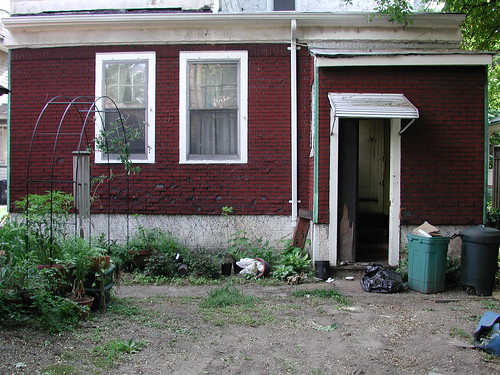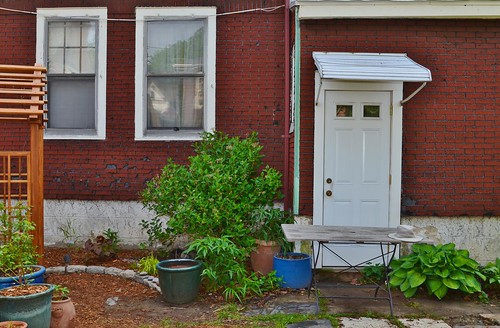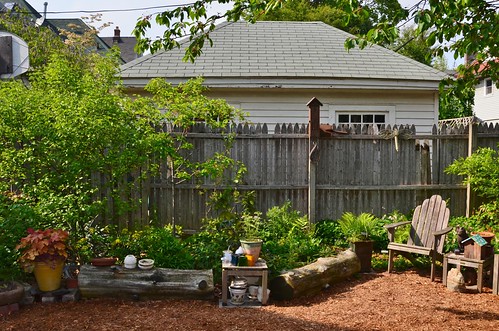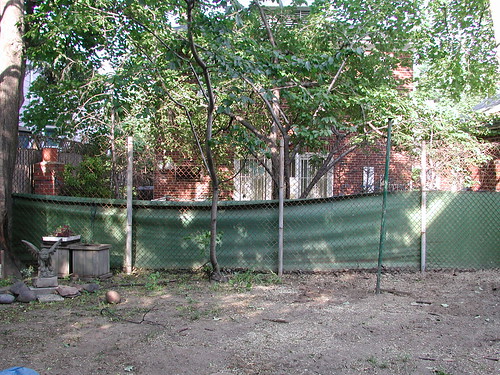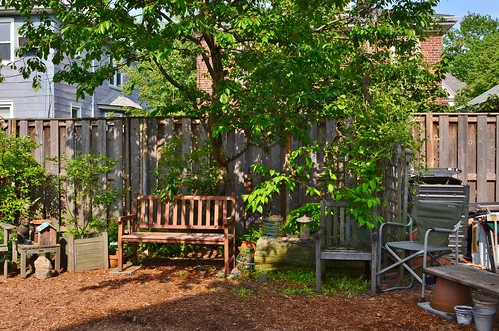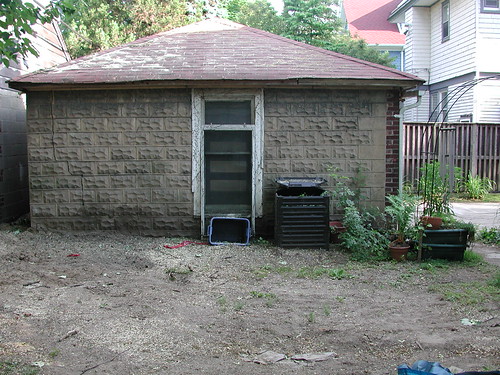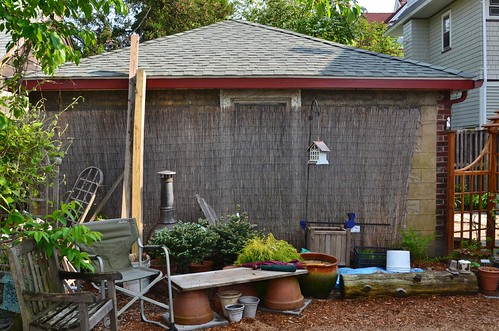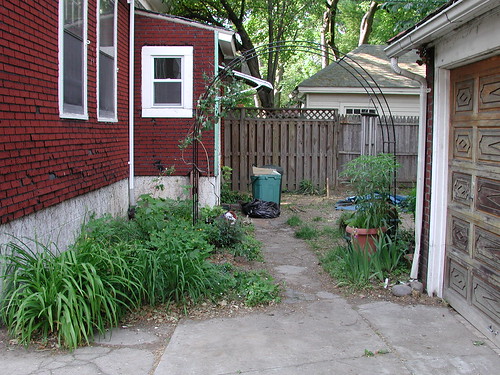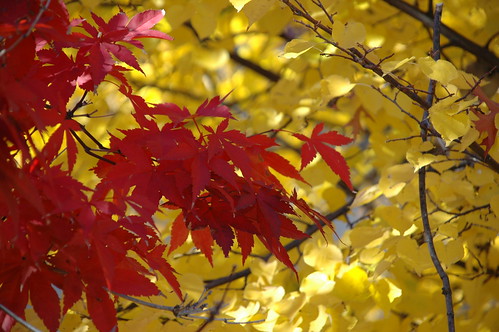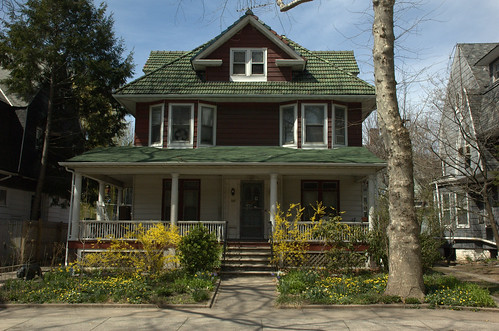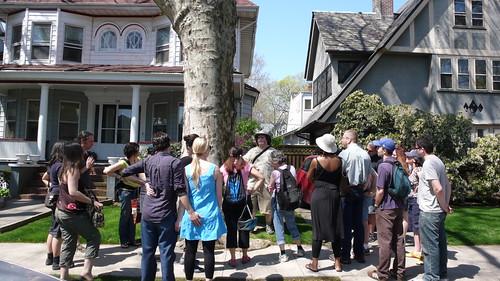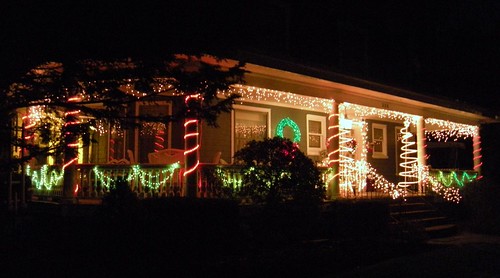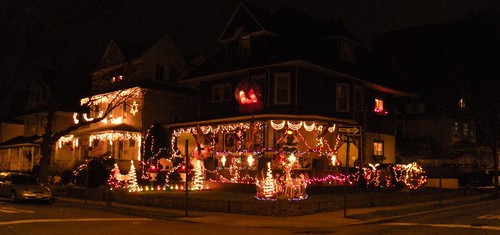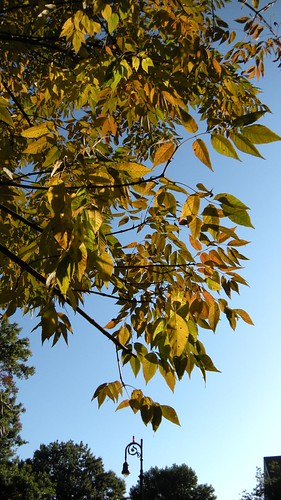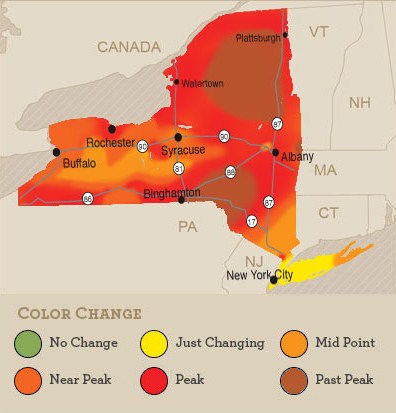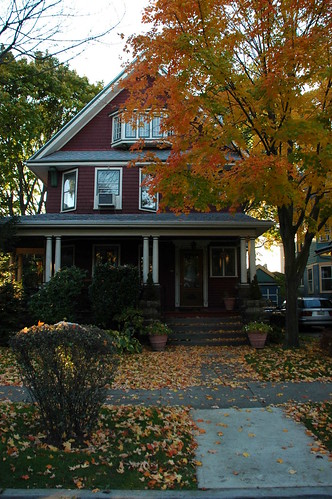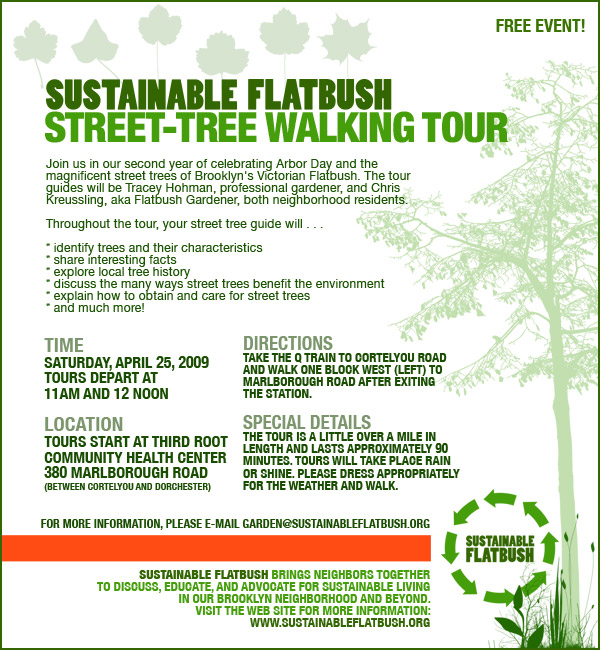Cortelyou Road, North side, looking East from Westminster Road, September 2006, before the new streetscape was put in place in Spring of 2007.

Neighbor, friend, and local real estate agent Jan Rosenberg writes of changes in our neighborhood in the online journal NewGeography:
Twenty some years ago my husband, 2 young sons and I moved from our cramped 16-foot wide attached row house in Brooklyn’s trendy Park Slope to a free-standing, 7-bedroom Victorian house in the Ditmas Park section of Flatbush with stained glass windows, pocket doors, original wood paneling, a back yard, front porch, driveway and 2-car garage in a little-known, tree-lined neighborhood about 10 minutes away – on the other, high-crime side of Prospect Park.
– Gentrification from the inside out in Brooklyn’s Ditmas Park
I know everyone’s tired of hearing it from me, but this is not Ditmas Park. It’s Beverley Square West and Ditmas Park West. Or Victorian Flatbush. Or just plain Flatbush. I suspect the editors provided the title, not Jan.
We’re newcomers to the neighborhood. We’ve only been here since the Spring of 2005. Most of our neighbors have been here much longer than that, even longer than Jan’s “twenty some” years. Jan summarizes what we hear from the “old-timers:” not so long ago, moving to this neighborhood was a pioneering act:
When crime exploded in the 1960s and welfare tenants were moved into some of the apartments, much of the middle class – white and black – fled. By the early 1990s many assumed that nothing could be done about the collapse of the quality of life. It wasn’t unusual for police officers in that era, many of whom lived in suburban Suffolk County, to respond to crime victims condescendingly by asking, “What do you expect if you live in a neighborhood like this?”
Little changed even after the extraordinary Giuliani/Bratton efforts brought down crime, little changed in the mid-1990s. The district’s once thriving shopping street, Cortelyou Road , still had no bank, no coffee shop, no diner, no sit-down restaurant, no children’s store, no real estate office.
The “from the inside out” part describes the efforts by Jan and other long-time residents to build community through a variety of means. Jan focussed her efforts on the 7 blocks of Cortelyou Road, from Coney Island Avenue to East 17th Street, that are zoned to allow commercial use. She credits other neighbors, as well, with transforming Cortelyou Road into our Main Street:
One incredible woman, Susan Siegel, decided she wanted to bring a farmers market to the neighborhood. She worked on this full time, and a year later it opened! Some Cortelyou grocers objected to having it on their strip; a few vocal homeowners objected to unlocking a public school yard and using it to house the market. Ironically the fight over the market swelled into a local “pro-development” movement, made up of people alive to the new possibilities, and sparked a neighborhood newsletter.
Once it opened in 2002, the Farmers Market became an informal community center, a literal common ground, for our neighborhood. The Market became a place where the full range of neighborhood residents could come together to buy fresh fruits and vegetables and to catch up on what’s happening in the schools, the playgrounds, and stores including a highly successful organic food co-op. Until then, only the homeowners were organized but now new co-op owners, home owners, and renters all came, mingling freely with each other, and with “veterans”, in a way that had not previously been the case.
Red Jacket Orchards, Greenmarket, Cortelyou Road, July 2007

Although Jan doesn’t mention it in her article, the transformation of the Cortelyou Road streetscape resulted from many years of organizing and planning from several different sources, including the Flatbush Development Corporation (FDC). FDC has been active since arson for insurance fraud was a serious concern for the neighborhood, unthinkable today, when the same homes that might have been torched 20 years ago are going for over $1 million. FDC sponsors the annual Flatbush Frolic, which takes place on Cortelyou Road, and has been running for 31 years.
Cobblestones, Cortelyou Road, South side, West of Stratford Road, march 2007. That’s Coney Island Avenue in the background.

The new clock at night, in April 2008, shortly after it was installed this Spring, on the grounds of P.S. 139 at the corner of Rugby Road.

Even before we moved into the neighborhood, James Heaton’s Flatbush Residents Email Network Database – FREND – served as an introduction to the cultural landscape and issues of the neighborhood we were adopting.
Jim Heaton, a local advertising executive initiated an online newsletter, FREND, [which] served to “connect” nearly a thousand people and families to the new initiatives, particularly around the Farmers Market and crime …
The successor to FREND is The Flatbush Family Network, started by two other neighbors:
The on-line contribution really blossomed in 2003 when Ellen Moncure and Joe Wong revived the Flatbush Family Network (FFN) . This site has become an invaluable source of neighborhood and childrearing information for the many young families who live here. For many people moving into this neighborhood, FFN provides an initial introduction and orientation to life in this neighborhood. For those who live here, it’s a convenient, ongoing source of information and support.
Related Content
Cortelyou Road Park, Park(ing) Day NYC 2008, September 2008
The Daffodil Project is in bloom on Cortelyou Road, April 2008
Cortelyou Road (Flickr Collection)
Links
Gentrification from the inside out in Brooklyn’s Ditmas Park, NewGeography
Changing Ditmas Park, Ditmas Park Blog
Race, Class and Gentrification in Ditmas Park, Brownstoner
